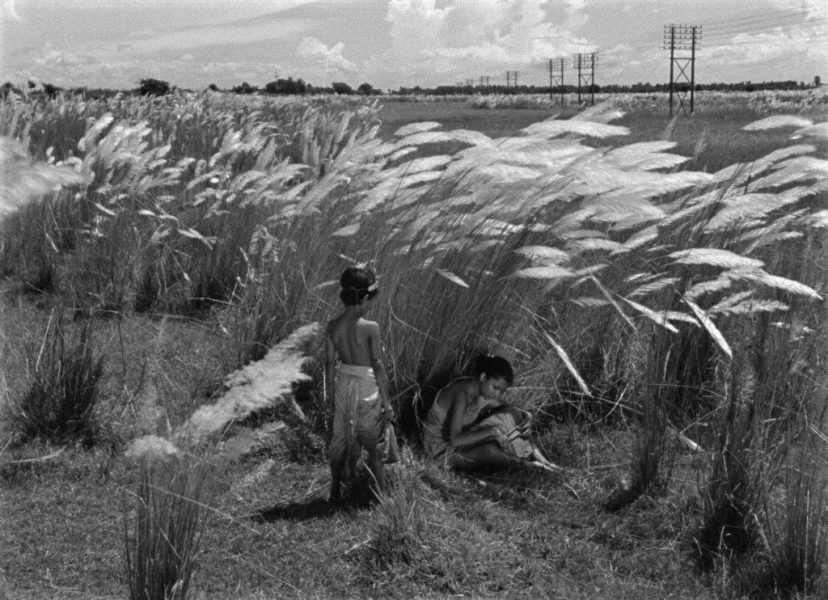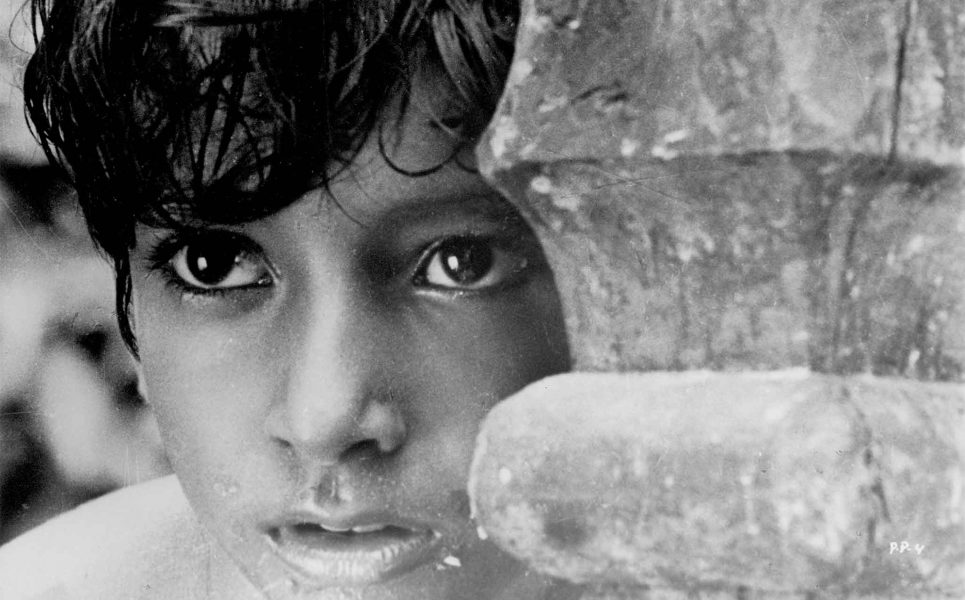“You can resist an invading army; you cannot resist an idea whose time has come” and so remarked Victor Marie Hugo, the renowned nineteenth-century French litterateur. Nothing else could better describe Satyajit Ray’s timeless classic ‘Pather Panchali’ (1955) or ‘The Song of the Road’, as it is known to the English-speaking world. Come to think of it, Ray didn’t have enough funds to complete the movie and he had to resort to desperate measures to finish filming. To make matters decidedly worse, his cinematographer Subrata Mitra was devoid of any real experience with the camera. Adding fuel to the fire, there were strict deadlines to be adhered to and to top it all, the film’s cast and crew were absolutely raw. In other words, the project was jinxed from the beginning itself. The production process consumed three years and there were many other hiccups along the way. However, the movie did get released and boy was it something!
Some called it a drag; others accused the film of exporting Indian poverty while there were many who dubbed it incomplete. Notwithstanding, ‘Pather Panchali’ firmly stands as a cinematic landmark in its own right – a work of art that changed the Indian cinemascape forever. What is the movie all about? To put it in a nutshell, it is about an impoverished family and the trivialities of daily life. Sounds simple! It is simple enough as life actually seems simple if looked at from an uncomplicated perspective. Somebody had it bang on when he said that simplicity is the most complicated business. Never before had an auteur delved so deep into the dynamics and redundancies of daily life and in such a profoundly humane fashion. The film was distinctly influenced by Italian Neorealism. At its core, ‘Pather Panchali’ proves that poverty doesn’t take away the little bundles of joy that life bestows on us.
If we were to analyze the movie in greater detail, we would find that it is more about Apu, the youngest member of the family and the son of Harihar Roy and Sarbajaya Roy. However, the tale would be left incomplete without the mention of Apu’s elder sister Durga, who acts like the thread holding the film together. While Harihar is struggling to make a living in a modest village in undivided Bengal of the 1920s, Sarbajaya seems to be eternally unhappy with the constricted ways of life that she has to endure. One of the most interesting characters in the film is the old and washed-up Indir Thakrun, who is apparently a burden on the family.
It is pertinent to note that there is something intrinsically lyrical about the plot, something that permeates all throughout the movie despite the obvious lack of drama that Ray concocted to translate realism on screen. The pronounced effect of Vittorio De Sica’s masterpiece ‘Bicycle Thieves’ (1948) could be clearly spotted if the film’s overall diegesis is considered from an objective point of view. We need to remember that Ray decided to become a filmmaker only after he had seen the Italian movie during a visit to London earlier.

‘Pather Panchali’ is also representative of childhood simplicity in more ways than one. The legendary scene where Apu and Durga are seen gazing at a train is a metaphor for a better future and things to come. The siblings are seen to take pleasure in rather simple things. One watch and it becomes crystal clear that Ray is trying to recreate the idyllic village life on screen, something that became non-existent after the partition of India. Based on a novel of the same name by successful Bengal novelist Bibhutibhushan Bandyopadhyay, ‘Pather Panchali’ is actually the first part of a trilogy that traces the life of Apu at three different periods in time in his life.
Drawing its inspiration from real life, the movie is beset with multiple tragic moments, recounted in a calm yet clear fashion. The demise of Indir Thakrun is thematically linked to the untimely death of Durga. The linkage, in a way, establishes the perishability of human life. While the passing away of Indir is nondescript and unceremonious, Durga dies on a turbulent night while making her family members understand the fright of death. All these happen when Harihar is away trying to make his way through poverty and provisioning for a better future. When he comes back, Sarbajaya breaks into tears at his feet. The scene is enough to evoke a feeling of helplessness that runs as a subtext.
While we marvel at Ray’s unique yet powerful way of storytelling, we become parts of a lost world that existed years ago. It is a miracle that we share many things with a setting that has hardly anything in common with our daily existence. Therein lays the beauty of good cinema where time and place no longer constitute barriers. If we look closely, we would find that there is something poetic about ‘Pather Panchali’, not so much for its portrayal of life in its crudest form but for rekindling the appreciation for those little things in life that we had forgotten years back. In a way, the movie takes us on a personal journey – a journey that leads us to a point of self-realization.
It seriously helps when we have a stalwart of Ravi Shankar’s caliber scoring the soundtrack of the movie. Now considered to be one of the finest background scores to have ever been composed, the music perfectly complements the somber mood. Shot mostly on location, a silent serenity marks the setting and makes it more authentic. The maverick mode of editing accomplished by the rookie Dulal Dutta would go down the annals of cinematic history as a novel style. When released, the film was at once loved and hated. However, over a period of time, it has managed to gather a significant fan base.
The iconic film critic Roger Ebert perfectly sums up the movie when he says, “The great, sad, gentle sweep of ‘The Apu Trilogy’ remains in the mind of the moviegoer as a promise of what film can be.” Indeed, ‘Pather Panchali’ is a promise that Ray made to his spectators – a promise that he was able to keep in the truest sense of the term.


You must be logged in to post a comment.